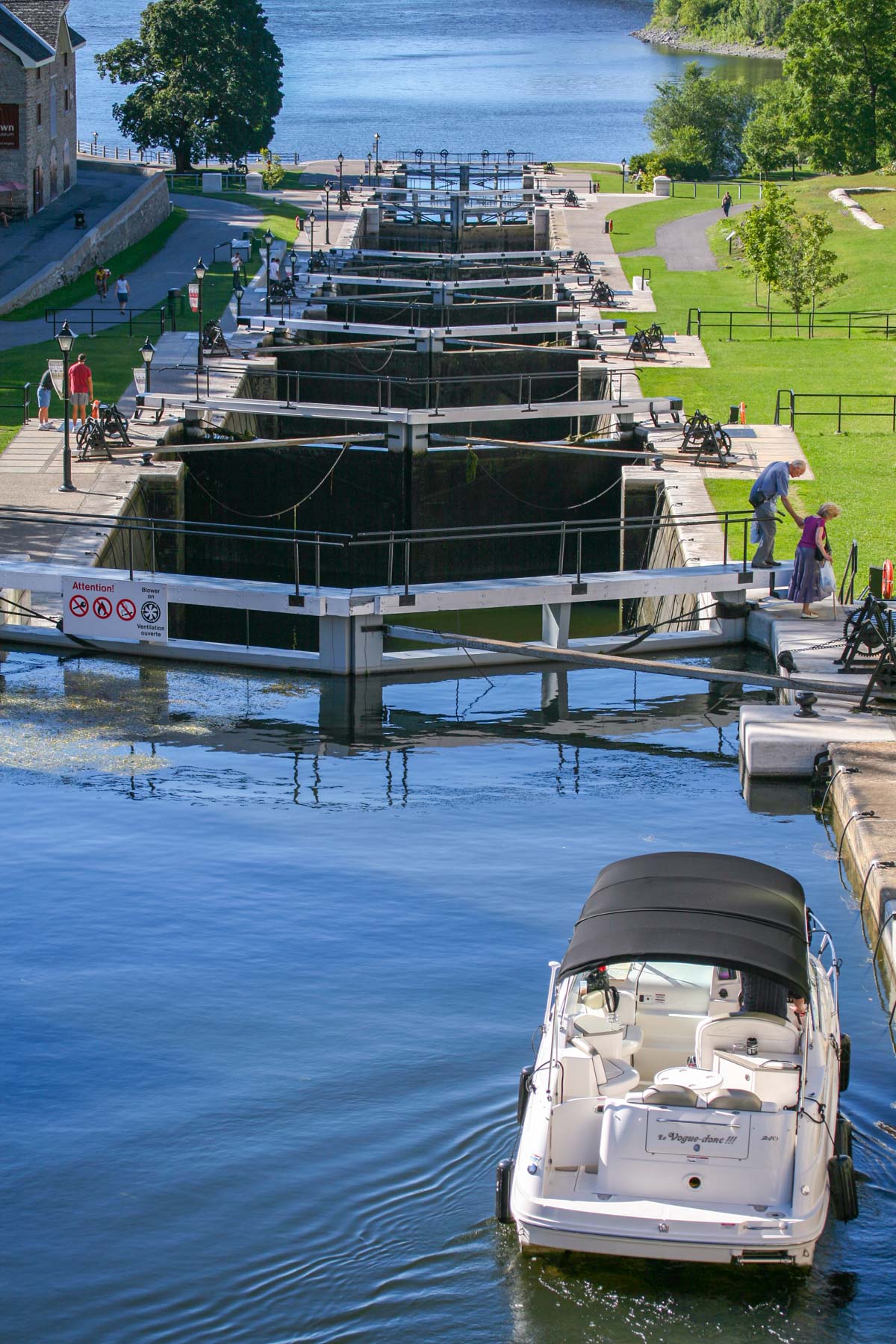TERRA TRIBUTA

Menu
ABONNEZ-VOUS
A L'INFOLETTRE
A L'INFOLETTRE

Why didn’t I take more opportunities to explore the amazing history and beautiful scenery of the Rideau Canal while I was in Canada’s capital?
Day 111 of my solo bike trip across Canada.
At 5:40 p.m., I’m standing at the intersection of some of Ottawa’s oldest and busiest streets: Wellington, Elgin and Rideau. In addition to the pedestrians and vehicles all around me, I notice to my left the National War Memorial with its bronze statues and imposing arch rising above the trees. In front of me, of course, is the imposing neo-Gothic complex of Parliament Hill. To my right, a gleaming white limousine parked in front of the luxury Fairmont Château Laurier hotel. And under my feet?
Well, I didn’t know it yet, but there’s a canal just 15 metres wide! I could have taken a short staircase to get a closer look at this national historic site, but no. I simply approach the parapet of the Plaza Bridge, click for a photo of the canal, click for one of the Château and continue on my way. Today, I can’t believe I only took one photo of this World Heritage Site. According to UNESCO, “The Rideau Canal is a large strategic canal constructed for military purposes which played a crucial contributory role in allowing British forces to defend the colony of Canada against the United States of America, leading to the development of two distinct political and cultural entities in the north of the American continent, which can be seen as a significant stage in human history.”
After the War of 1812, the St. Lawrence Seaway remained under enemy threat, prompting the British authorities to find a safer alternative for river transport between Lower and Upper Canada (roughly today’s Quebec and Ontario). Charged with overseeing the construction of this new waterway, Lieutenant-Colonel John By established his headquarters in 1826 on the banks of the Rideau River. This unnamed settlement later became the city of Bytown, now known as Ottawa. Incredibly, Canada’s capital was born from the construction of the Rideau Canal!
The next time I visit Ottawa with my family, we’ll be exploring this 200 km-long canal and its 47 water locks. Perhaps we’ll walk or bike along its banks, browsing historic buildings and museums? Or maybe we’ll venture out in a canoe to explore the meandering waterways over several days? Leo and Lucas would love to fish while Vanessa and I paddle along. We could picnic and swim along the way. I’d love to camp near the locks, and why not on Colonel By Island, where we might come across deer, loons and even ospreys.
I’m already looking forward to just taking my time to discover this land of great diversity, combining amazing history, vibrant culture and restful nature. What about winter? The section of the Rideau Canal running through downtown becomes one of the longest-skating rinks in the world!
To find out more about the Rideau Canal National Historic Site, visit the official Parks Canada website and the UNESCO World Heritage site.
I’ve also found the Ottawa Past
This function has been disabled for .